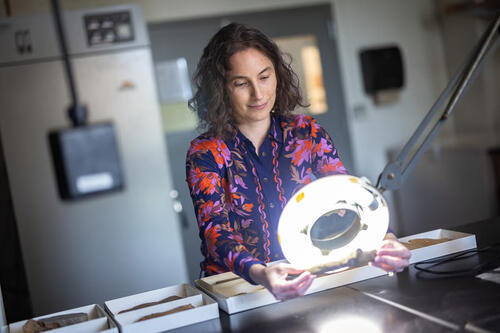
The murky world at the bottom of the oceans is now a little clearer, thanks to a new study that tracks the evolution of marine sediment layers across hundreds of millions of years.
It is a story of world-building on a grand, yet granular, scale, accomplished by a succession of marine animals that burrowed and tunneled their way through heat and cold, species expansions and mass die-offs. Scientists call the process bioturbation — the excavation and mixing of sediments and soils by burrowing animals, particularly for shelter and sustenance.
“Bioturbation is one of the most important forms of ecosystem engineering today, both in the oceans and on land,” said Lidya Tarhan, assistant professor of Earth and Planetary Sciences in Yale’s Faculty of Arts and Sciences, YIBS Faculty Affiliate, and lead author of the study published in the journal Science Advances.
“In the oceans, bioturbation plays a critical role in shaping the habitability and ecology of the seafloor, as well as in regulating nutrient cycling in overlying ocean waters,” Tarhan said. “However, how bioturbation has varied through Earth’s past, and the evolutionary timing of when bioturbators became the enormously impactful ‘engineers’ they are today, has long been poorly understood.”
In addition to their own data — which includes observations from geologic field work in the U.S., Canada, Spain, and Australia and sediment drill cores collected from the modern oceans — Tarhan and her collaborators surveyed more than 1,000 previous scientific studies. They looked specifically for information about how intensively seafloor sediments were churned, as well as six types of fossilized burrows that have typically been among the deepest burrows in the seafloor. Ultimately, they amassed a database covering 540 million years of Earth’s history — nearly the full evolutionary history of animal life.
For more information, click here for an article published by Yale News or here for the full study in Science Advances.



